
Lima
Although we transited though Lima
twice, we really did not see any of the city.
Cusco
We flew from Santiago to Lima, and
then directly on to Cusco. Cusco was the Incan capital. It was the
center of their world, so they called it
the naval of the earth. It sits in a wide valley 11,000 feet up in the
Andes. Getting there we flew over hundreds of sharp treeless peaks covered
in dark green velvet with creases marking the ridges and occasionally a narrow
white thread of a meandering footpath. Off in the distance were mountains
capped by cloudy
white glaciers.
The Inca conquered Cusco, which was
built in the shape of a puma, with the castle, Sacsayhuamán, as its head,
including, apparently (we never saw this) a zigzag stone wall for his teeth.
Cusco has retained an old world feel with narrow winding cobble stone streets
and stairs up and down the hills and quaint buildings and courtyards all around.
But I don't think you can see a puma in the city plan anymore. The central
square below, the Plaza De Armes, was the absolute center of the world and was
apparently the heart of the puma.
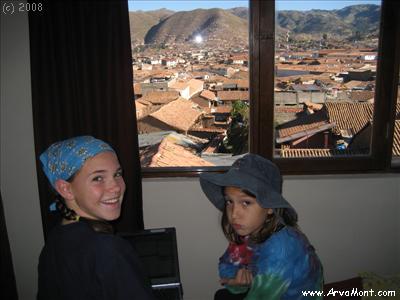 Yet another amazing Worldschooling venue!
Yet another amazing Worldschooling venue!
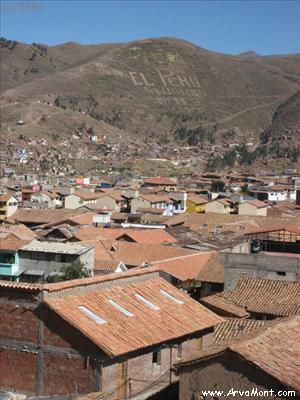
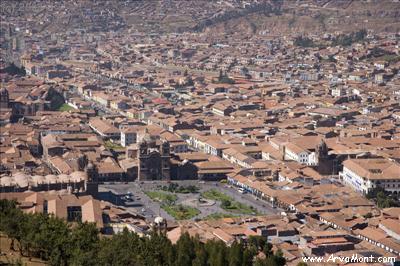
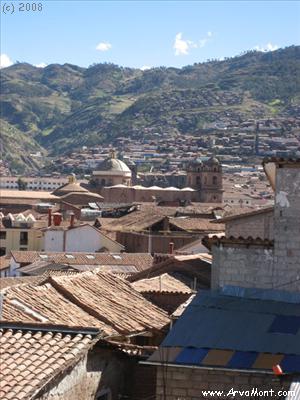


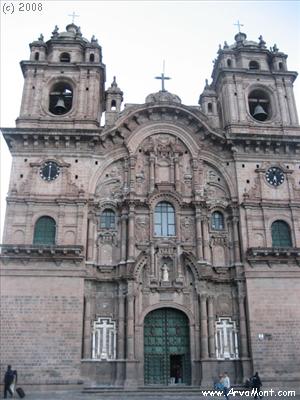
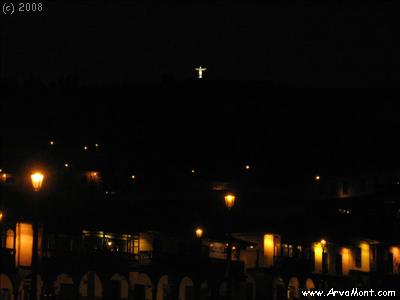
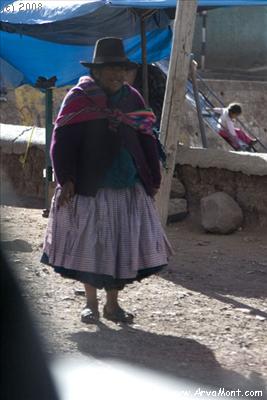
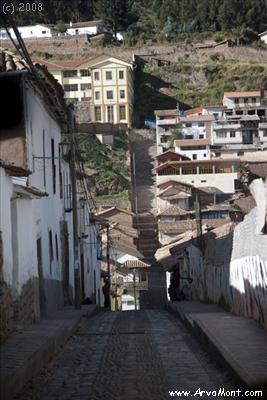
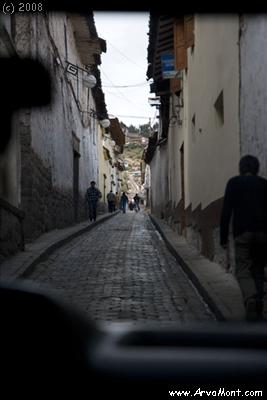
There really are lots of women in
their traditional dress, not just those involved in tourism. I love the
hats!


Sacsayhuamán
This is the large Incan site that
overlooks Cusco. Like most things to do with the Incas, no one is quite
sure what the purpose of this structure was. There are some who say is was
a fortress which could have housed 5,000 Incan soldiers. Others argue that
the stone masonry is too fine for this to have been a purely military site.
And of course the Incas, though so advanced in construction techniques and other
things such as astronomy, had no written language, so they have left us few
clues. Instead of writing their history, there were historians, who
memorized their history and told it like storytellers. The Spaniards
recorded these histories, however, there is a continuing question of their
accuracy.
It is known, though, that the last
Inca - Manco Inca - made his last stand for Cusco against the Spaniards here.
He held the place for 10 months before fleeing into the jungle to the town of Vilcabamba, where the Spaniards eventually caught and executed him.
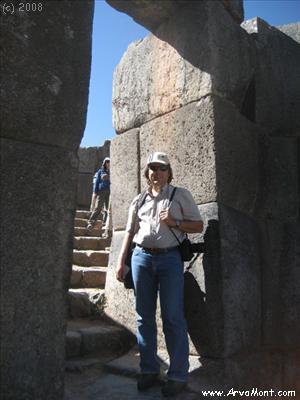
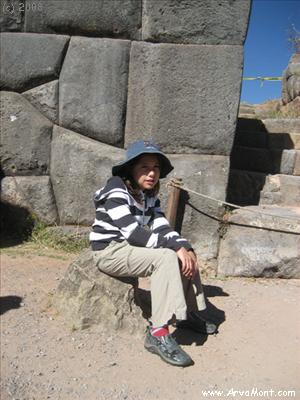 Look at the precision with which these stones are assembled.
Look at the precision with which these stones are assembled.
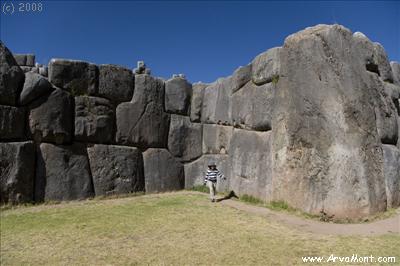
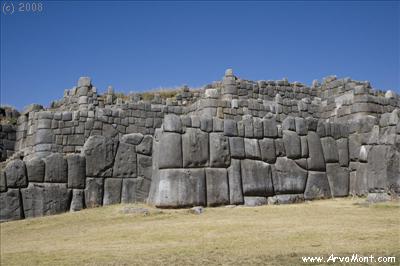
The Sacred Valley
Just over the hill from Cusco is the
Sacred Valley, so called because the river running through this valley is called
the Urubamba, which means Sacred River in the native Amerindian language.
A Farm
We stopped off at a tourist farm and weaving operation.
We loved the animals, though we still have trouble telling the llamas from the
alpacas. We could tell the vicuna apart!
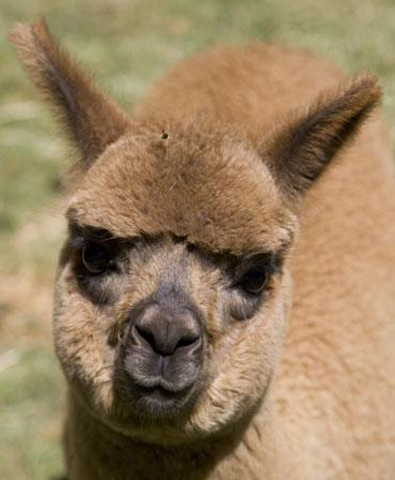
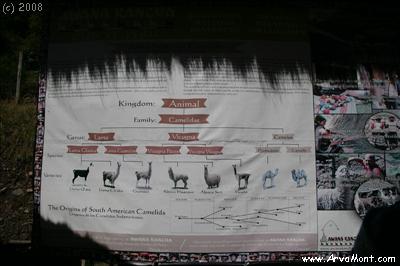
Here is a guide
that might help you. We were interested to learn that they are close
relatives of the camel.


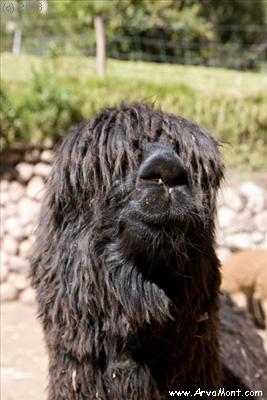
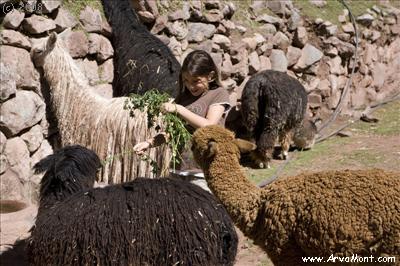

 A
vicuna, among the llamas A
vicuna, among the llamas
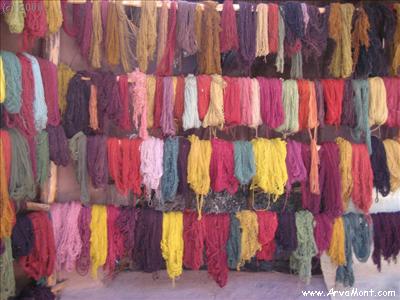
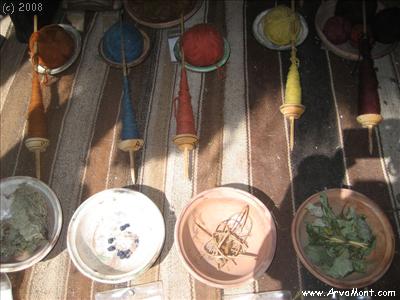
There are hand dyed alpaca yarn.
Their dyes are all natural: herbs and seeds and bugs found locally.

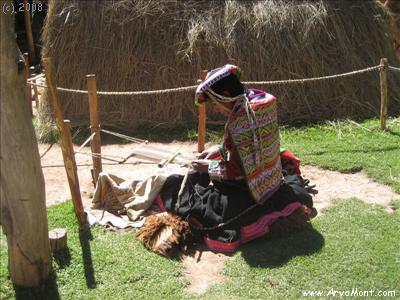
Pisac
This is a huge Incan ruin, complete
with many terraces. There is also a huge cemetery here; the Incas were
buried in caves which were bricked up with stone. Treasure hunters have
broken open all the caves, so if you glance at the hillside what you see is many
many small holes in the side of the mountain.


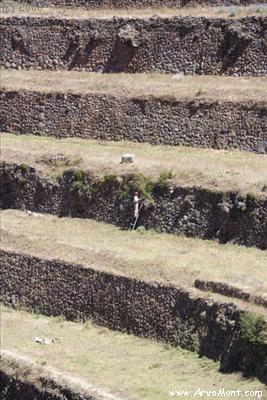
This musician was around the corner
when we arrived, but his beautiful melodies were echoing off all the mountains.
The music was so lovely, we bought one
of his CDs!

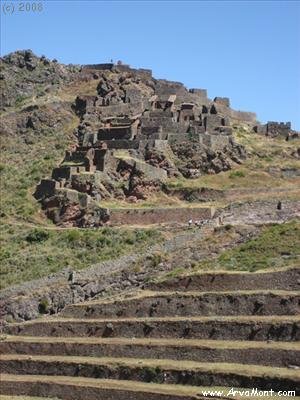
Ollantaytambo
Some of the original town of
Ollantaytambo is still lived in. It is remarkable to see the fine
aqueducts built throughout the city. No one need have walked more that a
block to a running water supply. There was also a religious or ceremonial
site built on the side of the mountain overlooking the town.
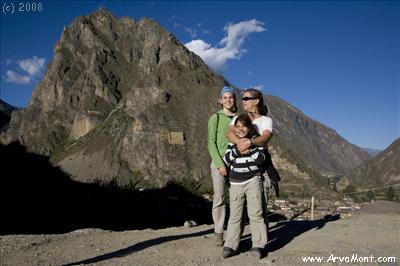
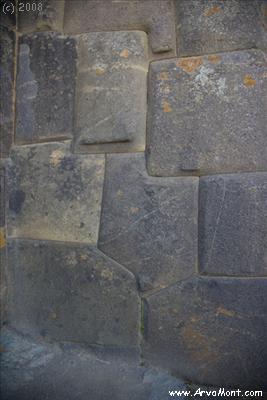


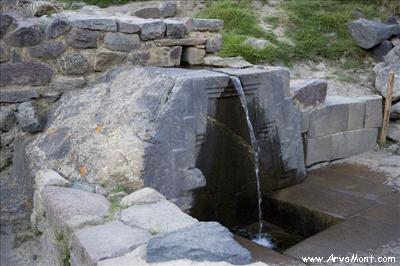
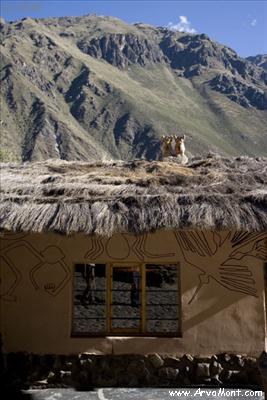
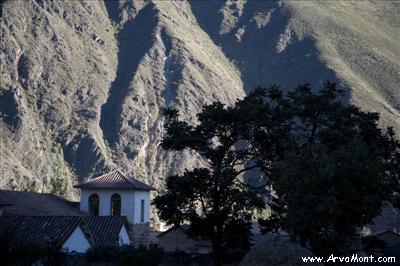
At our hotel in Ollantaytambo Anika was
intrigued by the flowers:
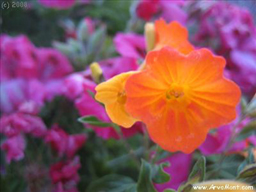 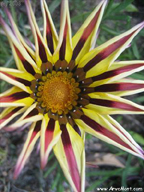   
From Ollantaytambo we took a train to
Aguas Calientes, the town at the base of Machu Picchu. There are only two
ways to get to Machu Picchu, along the Inca Trail or, as Yannis calls it, the
more relaxed,
Inca Rail. We chose the latter.
Machu Picchu
Machu Picchu was "discovered" in 1911
by Hiram Bingham. Upon arrival he met two families living in stone houses
on the site and was given a tour by a local 10 year old.
However, Machu Picchu remains a
mystery. Here are some of the questions that people are looking for
answers to:
1) What was the purpose of this
city? There are only 200 small structures thought to be appropriate for
living, meaning there were probably not more than 1000 people living here. Yet, there
were enough terraces in and around the town to have fed far more people.
There are also a disproportionate number of religious or ceremonial sites in the
city.
2) Who lived in the city?
Originally it was thought that the city consisted of mostly women, based upon
the size of the skulls found there. However, the Incas were a small
people, so this is no longer felt to be reliable. So who did live there?
3) Why did the Spaniards never
discover this city? They sought out cities just like Machu Picchu to
satisfy their need for gold. Furthermore, it is clear that Machu Picchu was never completed.
There are large stones, probably intended as altar stones, laying near a
religious site, amongst other things. It is also clear from the
architectural techniques used that building was begun less than 100 years before
the Spaniards arrived in Peru. So had they abandoned the city before the
Spaniards came? If so, why? Had they done something to annoy the
Inca, whose wrath turned it into a ghost town and wiped all mention of it from
the Incan oral histories? Or was it always a secret city, known only to the most
privileged and thus not mentioned in oral histories?
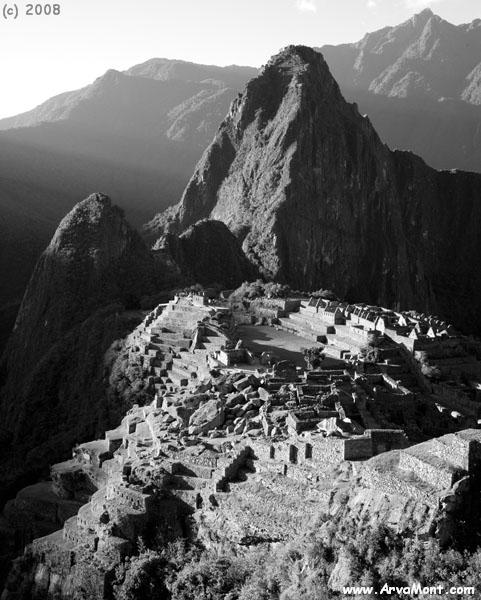 Looks like it could be from the 1913 National Geographic, doesn't it?
Looks like it could be from the 1913 National Geographic, doesn't it?
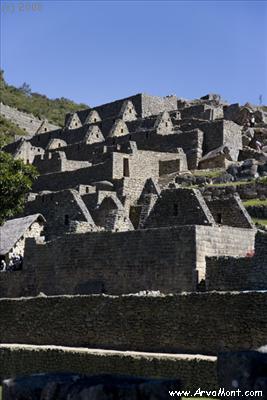
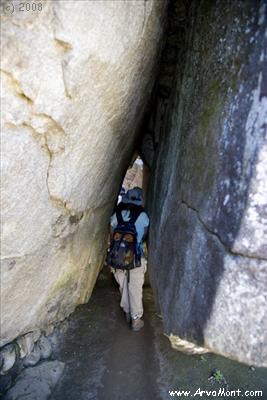
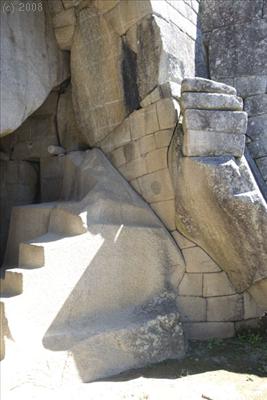
Look at the way the stonework has been carefully built around the existing
stones.
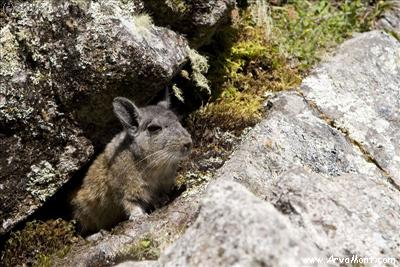
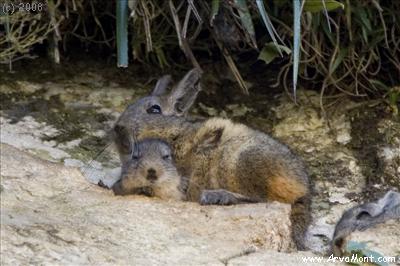 Chinchilla
(look like rabbits to me!) Chinchilla
(look like rabbits to me!)

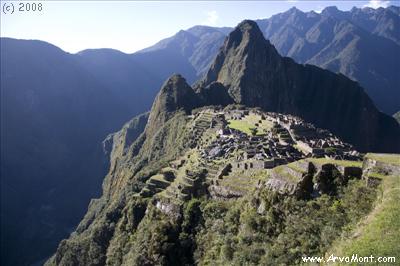 as seen
from the watch gate as seen
from the watch gate
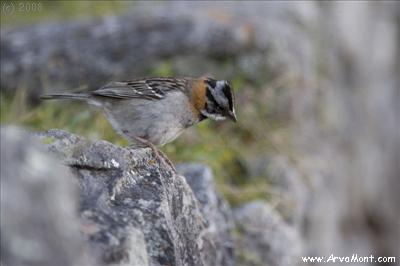
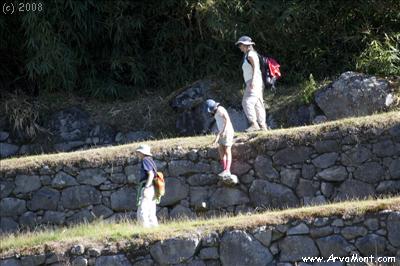
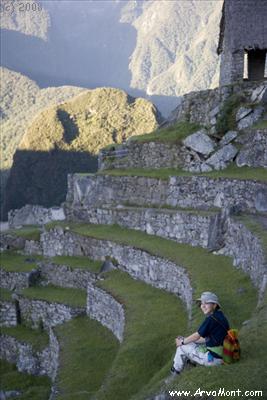
Look at those stones jutting out of the retaining wall. ^ They have these
all over, including hanging out over precarious precipices!

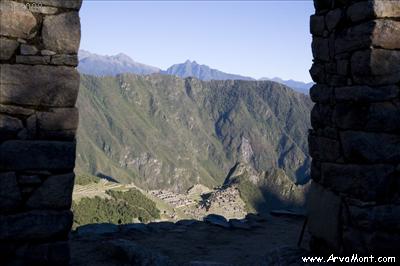
As seen from the Sun Gate. People go out of their way to be at the Sun
Gate at sunrise. Those walking the Inca Trail arise at 4 a.m. to get
there! And others walk up from the main sanctuary as soon as it opens at 6 am. to
get there. And yet, Yannis did not observe anyone who waited long enough
to see Machu Picchu in the full sunlight. They watch the sun rise and then
begin hiking down to the main site while it is still in deep shadow.
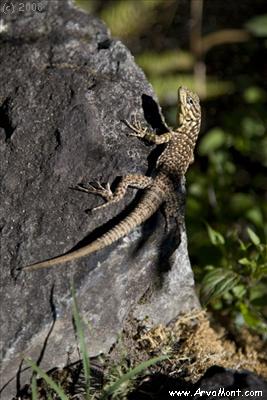
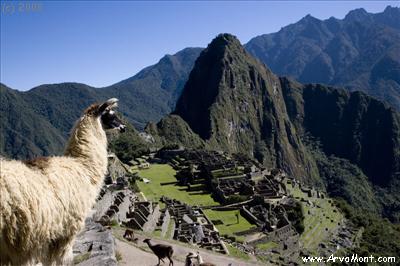





In order to hold a torch this stone was very carefully shaped and carved.
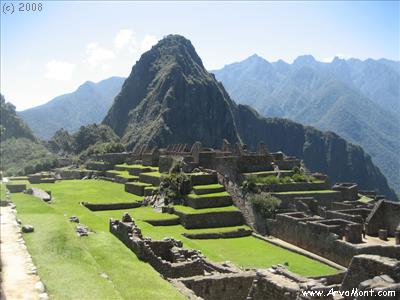

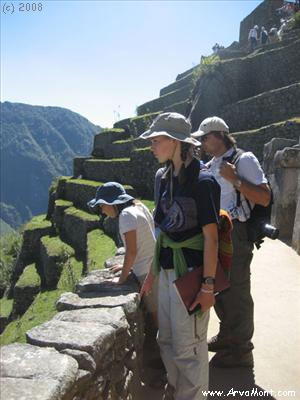
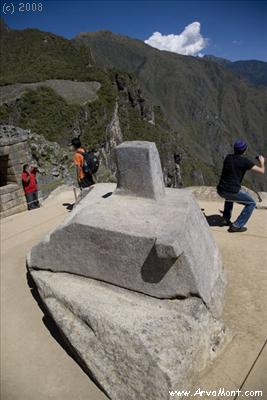

This stone sits in the "observatory." It is thought to convey positive
energy, which Anika is trying to absorb. I am inclined to believe it, as
Anika was actually enthused by Machu Picchu, rather than calling it another pile
of old rocks, as she had done at the previous sites we visited...
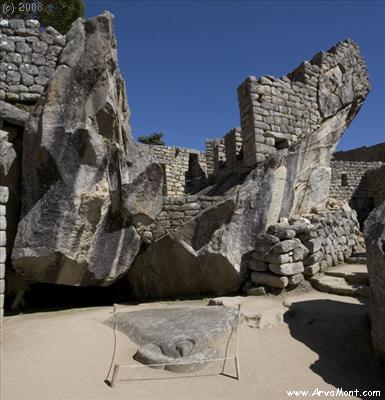
There were three animals which were thought by the Incans to have religious
significance: The Snake was responsible for things below ground, the
Puma was responsible for things on earth and the Condor was in charge of the
sky. When people died, it was the Condor who took control of them.
This ceremonial site in the heart of Machu Picchu was built to represent a
condor. The part on the ground is carved to resemble a condor head,
while the structure above was the wings. You can walk right through
the condor and up a narrow staircase behind it. There is an altar in
this narrow area.
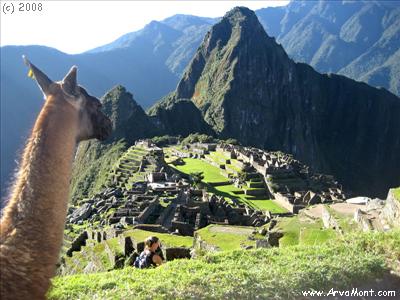

A llama watching out over Machu Picchu.
Waynapicchu
The hill overlooking Machu Picchu (meaning "old mountain") is called Waynapicchu
(meaning "young mountain"). The top of Waynapicchu has more ruins on it.
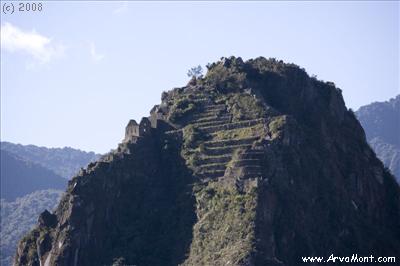
Since you can climb it, we decided we should, though Anika elected to stay home.
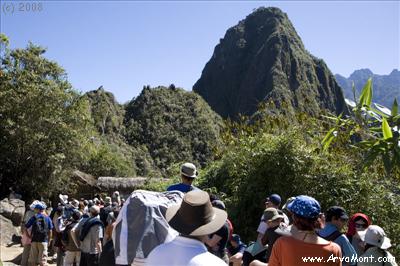
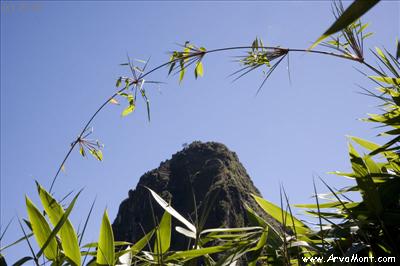
It turns out that you have to sign in and out of the trail to Waynapicchu.
This should have been our first clue that this trail might be more than was
advertised. Also, there are only 400 people allowed up each day. We
were 400, 401 and 402 - they took pity on us. They also stagger
people on to the trail, so we waited in this long line. (The trail begins
at the thatched gate.)
So then the long upward slog began - this must have been the Incan version of
the "Stairmaster."


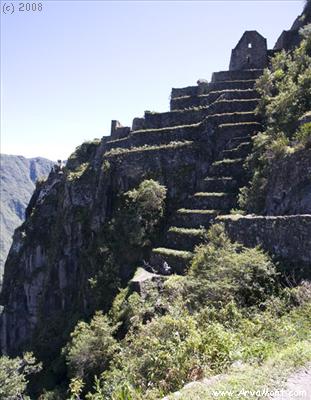
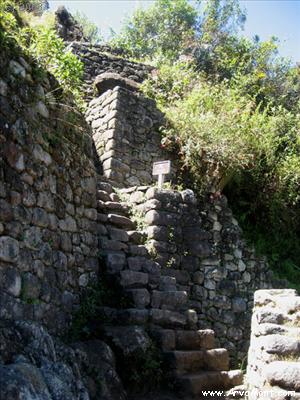
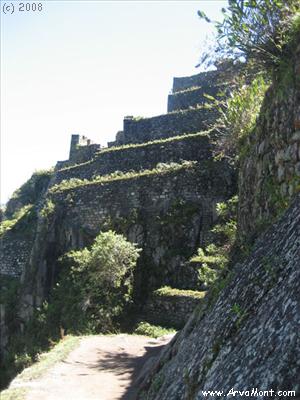
And just when we couldn't see anymore stairs there was this cave. I
wandered around a while, and finally concluded that I need to go through it.
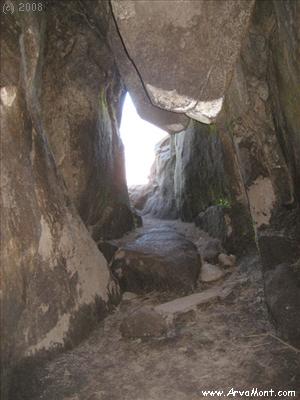

On the other side of the mountain there were more stairs.
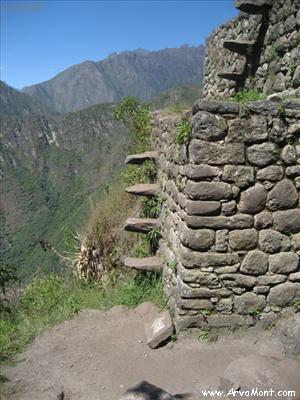 
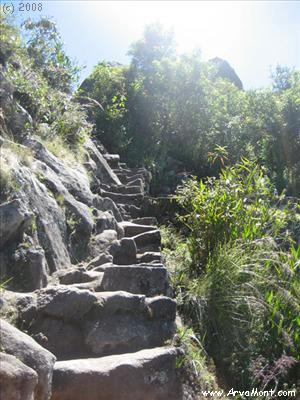
And eventually there was this crevice to climb through and a ladder on the other
side to take us to the very top!

The view from the top, fortunately, was lovely.
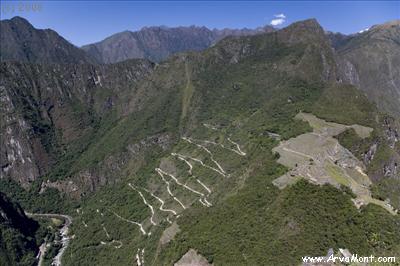

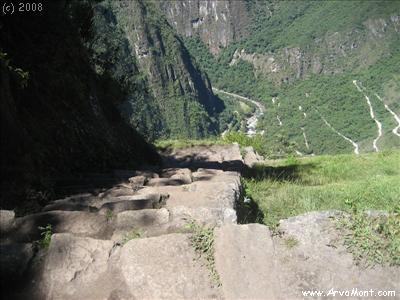
Our only refreshment at the top - a very mushed York Peppermint Patty from Oma and a
tangerine. Talk about planning ahead (though they do discourage you from
bringing food into the sanctuary)...
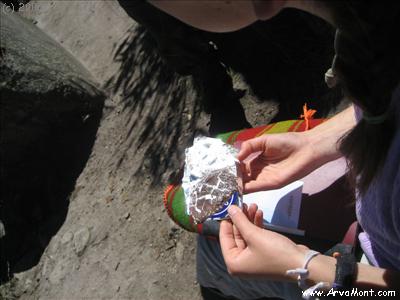
And getting down was worse than getting up! At least we weren't breathing
heavily due to the altitude, but now vertigo came into play!


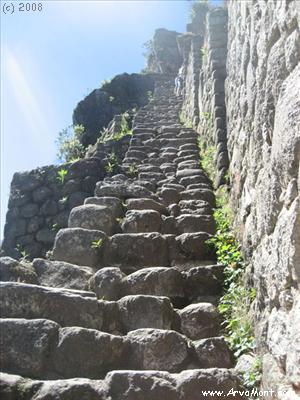
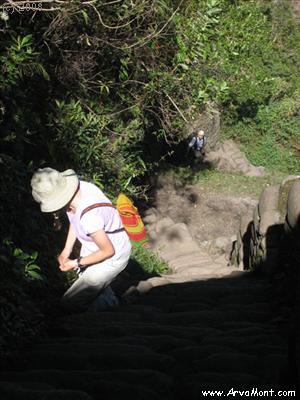
It was a very worthwhile hike, though I wish I had known what we were getting
ourselves into. Thankfully, Anika had elected to stay behind on this
adventure. She is very scared of depths and would not have enjoyed the climb
back down.
Aguas Calientes
We stayed in a hotel with a beautiful garden filled with lovely birds in Aguas
Calientes. Here are a few of them:

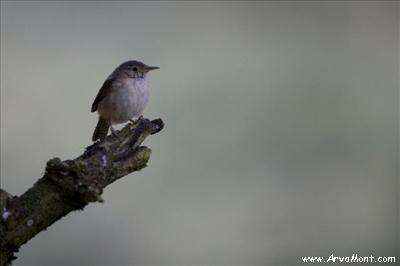

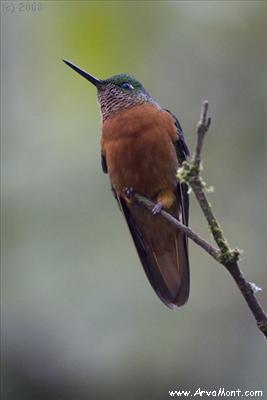
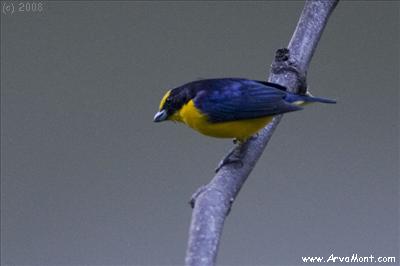



 Oh, and butterflies!
Oh, and butterflies!
Getting back to Cusco

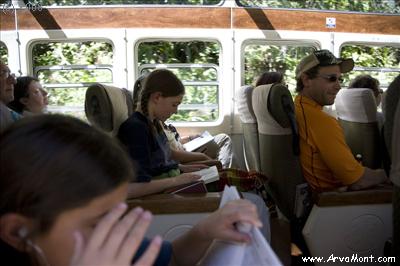
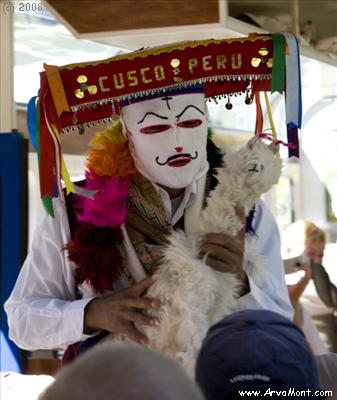
Here we are on the return trip to Cusco in Peru Rail. We didn't realize
that there would be entertainment on board. We had this fellow, and a
fashion show, using the two stewards as models.
From Cusco we took a long weekend
trip into the Bolivian jungle.
Then we returned to Lima in preparation for out flight to
Ecuador
| 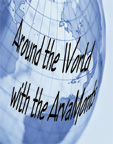 Around
the World With the ArvaMonts
Around
the World With the ArvaMonts














































 Looks like it could be from the 1913 National Geographic, doesn't it?
Looks like it could be from the 1913 National Geographic, doesn't it?



























































